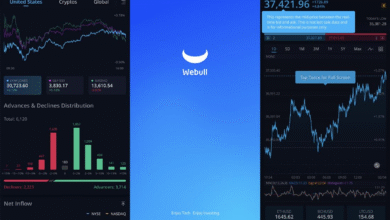Bitcoin Market Analysis: Trends & Predictions for Traders
Bitcoin market analysis has become essential for navigators in the volatile world of cryptocurrency trading. As Bitcoin fluctuates around $114,627 this Sunday, understanding current market dynamics, such as price predictions and volatility trends, is crucial for making informed decisions. Recent movements, including a bearish tone and a double top formation, emphasize the importance of employing technical analysis of Bitcoin to gain insights into future performance. With market capitalization currently at $2.28 trillion and a 24-hour trading volume of $25.22 billion, investors need to interpret these cryptocurrency trends effectively. The current consolidation phase indicates that traders should remain vigilant, watching for potential breakout signals or further declines below key price levels in the coming days.
An in-depth exploration of Bitcoin’s trading landscape reveals that scrutiny of price trends and market behaviors is vital for successful participation in the digital asset sector. Current observations highlight signs of indecision and potential bearish shifts, prompting the need for thorough technical assessments to inform trading strategies. The intricacies of market movements, including patterns and volume analysis, can provide traders with critical insights into expected price fluctuations. As Bitcoin’s price action unfolds within a tight range, understanding the broader cryptocurrency environment remains essential for identifying opportunities or risks. Adapting strategies based on key indicators could help investors navigate the unpredictable currents of this rapidly evolving market.
Current Bitcoin Market Trends
As Bitcoin trades at $114,627, the current market dynamics reflect a significant period of low volatility, suggesting a phase of consolidation. The trading range between $114,575 and $115,549 indicates indecision among traders and investors in the Bitcoin trading space. With a market capitalization of $2.28 trillion, Bitcoin represents a critical component of the cryptocurrency ecosystem, highlighting its dominance in the market at large. Investors are looking toward potential cryptocurrency trends that could influence Bitcoin’s price action in the coming weeks.
Recent indicators show that, despite a consolidation phase, there are underlying currents that could affect future Bitcoin price predictions. The lack of significant movement coupled with a substantial trading volume of $25.22 billion hints at high market participation, yet the indecision suggests that traders are waiting for clearer directional signals. As we observe shifts in buying and selling patterns, it will be essential to keep an eye on both market sentiment and broader economic factors influencing Bitcoin trading.
Analyzing Bitcoin’s Technical Indicators
In the technical analysis of Bitcoin, the formation of a double top near $124,000, coupled with a breakdown below the support at $117,000, has raised concerns over potential bearish momentum. The latest bounce off $111,658 appears weak and has failed to re-establish the previous highs, revealing a troubling trend in market volatility. Although there was initial hope of a recovery attempt, the inability to confirm these movements with strong buying volume indicates a lack of conviction among market participants.
Moreover, the mixed signals from technical indicators call for a more nuanced approach. The relative strength index (RSI) sitting at 47 reflects a neutral outlook, while the Stochastic oscillator suggests indecision with a reading of 31. These indicators imply that Bitcoin may be at a crossroads, where traders must consider both short-term volatility and long-term structural support. Consistent downward movement marked by lower highs reinforces the bearish sentiment, hinting at further declines in Bitcoin’s price if key levels are broken.
Preparedness for Market Volatility in Bitcoin Trading Contexts
As market volatility remains a pivotal factor in Bitcoin trading, understanding its potential impacts on price fluctuations is crucial for traders. The current sentiment suggests that Bitcoin may see a downturn if it continues to breach key support levels. The pivotal zone remains just above $117,000, and if Bitcoin prices fall below $111,658, it could precipitate a sharper decline. The analysis of these volatile periods and price levels is essential for forming effective trading strategies, as they directly inform risk management practices.
For cryptocurrency traders, recognizing patterns in market volatility can lead to better trading decisions. It’s vital to deploy robust technical analysis methods to gauge entry and exit points in this environment marked by uncertainty. Proactive monitoring of Bitcoin’s price movements alongside volume trends will aid traders in anticipating shifts and adapting their strategies accordingly. Understanding how recent price action aligns with historical trading patterns can significantly enhance a trader’s ability to navigate the complexities of the Bitcoin market.
Fundamental Factors Influencing Bitcoin Price Predictions
The landscape of Bitcoin price prediction is deeply influenced by various fundamental factors, including regulatory developments, technological advancements, and macroeconomic trends. As the global cryptocurrency market evolves, shifts in regulatory stances across different countries can spur significant reactions in Bitcoin prices. For instance, any positive news regarding the legalization of cryptocurrencies tends to bolster investor confidence, thereby propelling prices upward.
Technological advancements, particularly in blockchain innovations and transaction efficiencies, also play a significant role in shaping Bitcoin’s future. As the ecosystem matures, improvements can lead to increased adoption and usage, which, in turn, positively affects Bitcoin’s long-term value proposition. Cryptocurrency trends related to Bitcoin are often tied to broader technological adoption metrics, reflecting both the asset’s volatility and its potential for growth.
Navigating Bearish Signals in Bitcoin Trading
Current market observations present clear bearish signals for Bitcoin trading, particularly evident in the double top formation and subsequent pricing breakdowns. As Bitcoin recently struggled to maintain upward movements, the challenges faced in regaining previous highs suggest an emerging trend where sellers may gain an upper hand. This raises important questions for investors regarding their positions and strategies in a possibly declining environment.
Moreover, traders need to remain vigilant to these bearish indicators, especially the heavy selling pressure evidenced by increased volumes during downturns. Understanding how these market conditions manifest allows traders to adjust their positions and protect their investments. The ability to respond to fundamental shifts, including those characterized by distribution patterns, could be the difference between navigating losses and optimizing gains in the current Bitcoin market landscape.
Future Outlook on Bitcoin Market Performance
Looking ahead, the future outlook for Bitcoin hinges on both market sentiment and external economic factors. With Bitcoin currently trading at approximately $114,627, traders must carefully monitor whether it can reclaim the important $117,000 level. A sustained recovery above this mark could signal a potential reversal in sentiment, offering targets for bullish traders. Conversely, a failure to hold above this critical zone may push Bitcoin further into a bearish trend, potentially leading to price points much lower than current levels.
Additionally, broader market trends may significantly impact Bitcoin’s trajectory. Key economic indicators such as inflation rates, interest policy changes, and global market stability often intertwine with cryptocurrency performance. As investors navigate this complex environment, staying abreast of relevant financial news and technical analysis insights will be crucial for making informed trading decisions in the Bitcoin market.
Understanding Bitcoin’s Market Capitalization Dynamics
Bitcoin’s current market capitalization stands at an impressive $2.28 trillion, emphasizing its critical role within the cryptocurrency sector. This substantial valuation not only reflects its position as the leading cryptocurrency but also underscores its potential influence over other digital assets. When analyzing cryptocurrency trends, Bitcoin often serves as a barometer; fluctuations in its market cap can indicate broader shifting market dynamics, affecting altcoin prices as well.
Investors looking at market capitalization should consider the implications of volatility and market sentiment. When Bitcoin’s market cap increases, it often attracts more retail and institutional investors, which can create positive feedback loops in terms of price and confidence levels. On the other hand, an unstable market cap during periods of bearish trading can induce caution among investors, potentially leading to market corrections and further declines.
The Role of Volume in Bitcoin Price Fluctuations
Volume plays a critical role in assessing the strength of Bitcoin price movements. Currently witnessing a 24-hour trading volume of $25.22 billion reflects high levels of activity in the market, providing insights into the buy and sell pressures acting on Bitcoin prices. Volume analysis indicates the conviction behind price trends; higher volumes during price declines can signal robust selling interest, while bullish pushbacks can be seen through increased transaction volumes during upward price movements.
Traders attempting to decipher market intentions should therefore keep volume data at the forefront of their analysis. Synchronized with price movements, volume can either confirm a trend or provide early warning signs of reversals. By incorporating volume analysis into their trading strategy, market participants can gain a deeper understanding of Bitcoin’s market health and enhance their predictions regarding future price actions.
Impact of Technical Patterns on Bitcoin Trading
Technical patterns have always been integral to Bitcoin trading strategies. Observing formations such as double tops and bearish flags can aid traders in identifying potential price reversals or continuations. In the current market scenario, the double top observed near $124,000 raises significant concerns about the present bearish market sentiment and hints at further declines below critical support zones. Understanding these patterns is essential for traders seeking to optimize their entries and exits in a volatile market.
Furthermore, the use of various technical indicators, such as moving averages and oscillators, can provide context for interpreting these patterns. They function as additional confirmation tools, allowing traders to validate their predictions regarding future price movements. By applying comprehensive technical analysis methods, individuals trading Bitcoin can achieve better-informed decisions while navigating the intricate landscape of cryptocurrency trading.
The Influence of Market Sentiment on Bitcoin Prices
Market sentiment remains a key driver in determining Bitcoin’s price trajectory. When investor confidence is high, Bitcoin often experiences upward price movement; conversely, periods of skepticism can lead to rapid declines. The emotional reactions of traders and stakeholders can be especially pronounced in the context of market volatility, where news cycles can sway opinions—whether it be positive regulatory developments or negative market predictions.
As Bitcoin continues to consolidate around $114,627, understanding market sentiment becomes essential for traders. Keeping tabs on social media trends, search interest, and news sentiment can provide valuable insights into potential market shifts. By gauging the mood of investors toward Bitcoin, traders can better position themselves to take advantage of price changes while mitigating risks associated with undue market emotionality.
Frequently Asked Questions
What is the current state of Bitcoin market analysis?
As of now, Bitcoin is trading at $114,627, reflecting low volatility within a narrow range of $114,575 to $115,549. The Bitcoin market analysis indicates a period of consolidation, with a market capitalization of $2.28 trillion and a 24-hour trading volume of $25.22 billion, signaling market indecision.
How do recent trends affect Bitcoin price prediction?
Recent trends in Bitcoin market analysis show a bearish tone, particularly following the formation of a double top near $124,000 and a breakdown below $117,000 support. These indicators can significantly impact Bitcoin price predictions as they reflect a potential shift in market sentiment.
Why is market volatility important in Bitcoin trading?
Market volatility is crucial in Bitcoin trading as it signals potential price fluctuations. Currently, Bitcoin’s market analysis shows low volatility, but a break below critical support levels could trigger increased volatility and further declines.
What do technical analysis of Bitcoin indicators show?
Technical analysis of Bitcoin presents a mixed outlook. The Relative Strength Index (RSI) is at 47, indicating neutrality, while the Stochastic oscillator signals indecision at 31. The MACD level indicates a bearish bias, which traders should consider when analyzing market movements.
What are the implications of Bitcoin’s market consolidation?
The current consolidation phase in Bitcoin markets suggests uncertainty among traders. A failure to reclaim prior highs after a bounce from $111,658 might indicate waning bullish strength, signaling potential further declines and highlighting the importance of market analysis.
How does volume analysis contribute to Bitcoin trading strategies?
Volume analysis is key in Bitcoin trading strategies as it reveals market sentiment. Current Bitcoin market analysis shows heavy selling pressure with low conviction on rebounds, indicating that traders may need to adjust their strategies based on this volume behavior.
What are the key resistance levels in Bitcoin market analysis?
In the current Bitcoin market analysis, key resistance lies above $117,000, which is essential for a reversal in momentum. A sustained break above this level could shift market dynamics, whereas a breach below $111,658 may signal further declines.
How can traders utilize market analysis for Bitcoin?
Traders can utilize market analysis for Bitcoin by closely monitoring price action, volume trends, and key indicators such as RSI and MACD. Understanding these metrics can help inform trading decisions and anticipate potential shifts in Bitcoin’s price movement.
| Key Point | Details |
|---|---|
| Current Trading Price | $114,627, within a narrow range of $114,575 to $115,549. |
| Market Capitalization | $2.28 trillion. |
| 24-Hour Trading Volume | $25.22 billion. |
| Market Trend | Showing signs of consolidation after a correction. |
| Bearish Signals | Double top formation at $124,000 and breakdown under $117,000. |
| Key Reversal Zone | Above $117,000. |
| Bearish Flag Formation | Indicates a continued downward trend. |
| Momentum Indicators | RSI: 47 (neutral), Stochastic: 31 (indecision), MACD: -365 (bearish bias). |
| Overall Market Sentiment | Indecisive with mixed signals from various indicators. |
Summary
Bitcoin market analysis on Sunday morning reveals a trading price of $114,627, indicating a period of low volatility and market indecision. Despite recent consolidation, bearish formations and a lack of sustained bullish momentum suggest traders remain cautious. The market shows mixed signals from momentum indicators, confirming the prevailing indecision in the market. As the situation evolves, traders should stay vigilant near key support and resistance levels.




